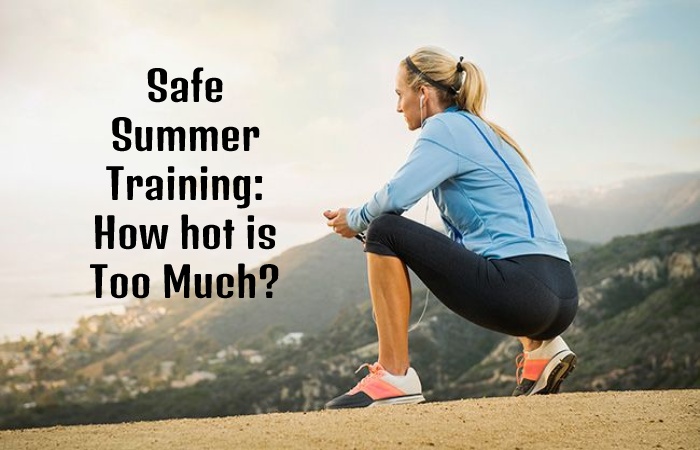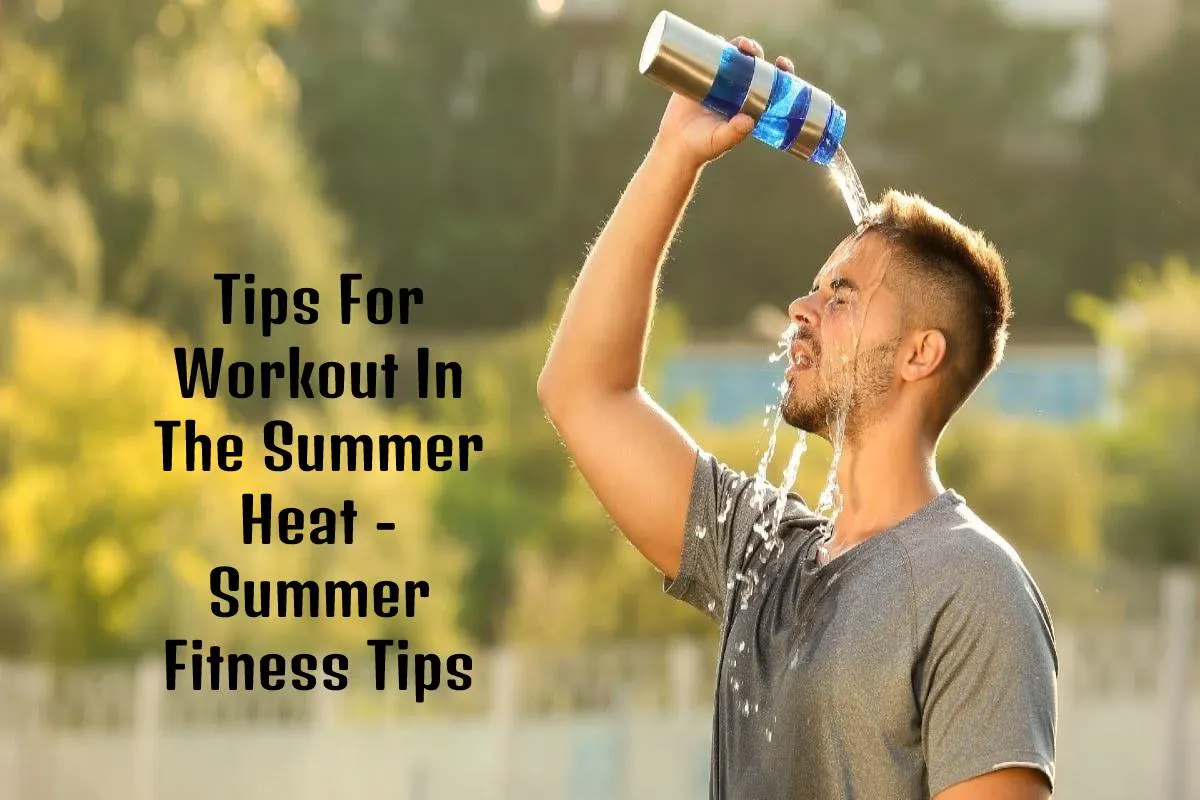Table of Contents
Tips For Exercising In The Summer Heat
Tips For Exercising In The Summer Heat: Ready to sweat? The sun said, “Say no more.” Although temperatures soar in the summer, there’s not much you need to do before effort begins to form on your forehead… and everywhere.
But what about you’re training? It’s always fun to get outside and enjoy some vitamin D and fresh air while you work up a sweat, but doing it safely in the summer (or anytime it’s hot) is a different story. This is the checklist for safe training in summer when it’s hot, hot, hot, including recommendations from the
You may feel young, healthy, and invincible…but no one is immune from overheating. “Even young and healthy people can get heat illness from strenuous physical activity in hot weather,” reports the CDC. So these tips are for the whole world
Safe Summer Training: How hot is Too Much?

There is a safe outdoor activity threshold. Any temperature above 80ºF is considered a caution zone, but if it exceeds 90ºF, it’s best to cool it down (literally) when exercising outdoors until temperatures drop. When the heat rages, it’s best to stick to something indoors with air conditioning.
Safety Tips for Exercising Outdoors
Check the Forecast
First, keep an eye on the temperature and control the heat around you. Humidity must also be considered; high humidity means less sweat evaporation, which means the body’s cooling system can’t function properly. If it’s boiling, don’t walk on the beach.
Start Small and Slowly
Before you start an advanced 60-minute HIIT workout in 90-degree mid-July weather, consider starting with hot-weather activities. Lower impact, slower movements, shorter duration…don’t hurt yourself! You can also apply this rule to general training; more is not always more. Listen to your body!
Be Aware of Your Fitness Level and Your Limits.
As always, it is essential to listen to your body. If you’re starting, you might want to be more mindful, i.e., exercise before the hottest time of the day, drink more fluids, exercise with a friend, etc. It’s essential to know your limits and always listen to your body. It’s not worth getting sick or injured during a sunny workout, okay?
Note: Beginners or not, anyone can get heat stroke (including heart attack) from exercising outdoors in hot temperatures. Whatever your fitness level, take the necessary precautions to protect yourself during the summer heat.
Hydration
It goes without saying, but drink more water. Additional water, all water. And get electrolytes! These essential minerals help regulate fluid levels in the body and prevent heat risk factors like heat stroke and dehydration. Drink beverages like raw coconut water, add Liquid IV/Cure packets to water, or eat water-rich foods.
Just try it; make your electrolyte drink
Ingredients
- ½ cup fresh lemon juice
- 2 cups coconut water
- Two tablespoons of honey
- ⅛ teaspoon of Himalayan Pink Sea Salt
- One serving of magnesium powder, optional
- ice cream to serve
Addresses:
Step #1 – Place all ingredients except ice in a blender and blend for about 10-20 seconds.
Step 2: Pour into a glass with ice and enjoy.
Right Time
Nobody benefits from training in the midday sun, so try to do it first thing in the morning or closer to sunset. This is better for your skin and gentler on your body, and your training will be more comfortable and safer! Avoid that 10-2 hour block when the sun’s rays are most potent and most likely to cause damage whenever possible.
Avoid Heavy Meals for Post-Workout Recovery
Avoid eating a large, heavy meal before a hot, intense workout in the sun. As for your lighter meal before, give your gut an hour to process it before you go outside
To fuel those hot summer workouts, have a pre-workout snack rich in water and nutrients. Make a light but hearty smoothie with summer berries, water-rich spinach, and high-protein almond butter. Although you can mix it with any milk, raw coconut water gives you an all-natural boost of electrolytes.
Protect Your Skin
SPF is an absolute must on hot summer days, whether you exercise or not. Protect your skin with sunscreen and dress for the occasion: light, cool and breathable layers covering key stress areas (e.g., shoulders), and wear a hat or visor whenever possible.
Use the Buddy System
Having a training partner can be helpful in many ways, but it also serves as a safety net when you’re in the heat if you notice any of the following warning signs. If you don’t have anyone to train with, grab your phone and tell someone about your plans, just in case. That sounds grim, but it’s an essential part of summer training. You got reinforcements!
Keep Cooling Tools Handy
Ice packs, neck fans, and damp towels can serve as essential cooling aids between reps and sets or after a workout is complete. Your team is critical too, and Breathable and ventilated sportswear will be your best friend. Bonus points if it’s a sweat-wicking product or is specifically designed for the summer months.
Heat Exhaustion Symptoms
Heat energy is the first phase of heat sickness; Sunstroke is the worst. Pending one of these symptoms, if you exercise in hot weather, these can be signs that your system is burning out and you are feeling fatigued:
- Electric shock
- Skin rashes
- Fatigue
- Dizziness
- Muscle weakness
- Headache
- Nausea and vomiting
- Rapid breathing and heart rate
- Confusion
- Hallucinations
- Slurred speech
How to Guard Yourself against the Summer Heat
Is the conclusion? Staying active in the summer is excellent, and we highly recommend getting outside. But not at the cost of your health. When it originates to safe summer workouts, remember to keep an eye on the weather and be on the lookout for any questionable symptoms you may have. When in doubt, play it safe! It’s hot out there, and your care comes first.
Conclusion
Tips for exercising in the summer heat, So summer has arrived with the high ambient temperatures of over 40 o C and the extraordinarily sunny climate that is characteristic of our country. While children, the elderly, and those with respiratory conditions may be at increased health risk during the heat, adults who play sports can also be at risk if several precautions are not followed.
During physical activity, body temperature increases due to the heat given off by muscle contractions. This increase is compensated by the body’s thermoregulatory actions, such as sweating or increased blood flow to the skin, to slow and reduce the rise in body temperature. However, when physical activity is combined with a hot environment, the dangerous increase in body temperature, as well as dehydration, can cause several physiological changes and problems in the body, which cannot be achieved in the event of non-compensation and non-fulfillment of a temperature drop can lead to dizziness, coma or even lead to death.
Also Read: How to Design the Ideal Bedroom That Helps You Sleep
Also Read: Tips to Land Your Dream Job – How to Land Your Dream in 2022

